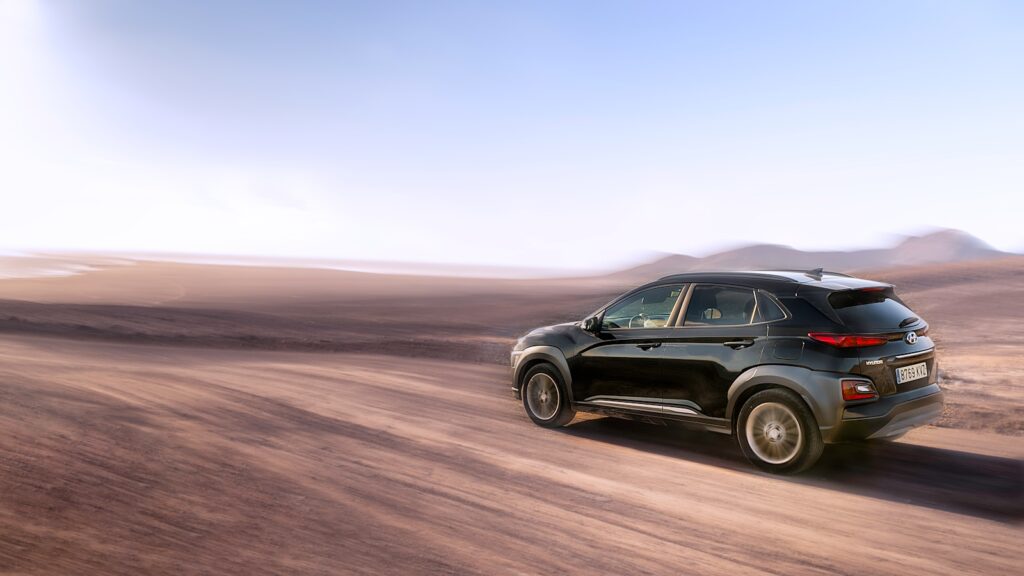
You’ve worked hard, you’ve saved every penny, and you’ve finally found it – that perfect car, the one that promises freedom, reliability, and that undeniable new car smell. The gleam of the paint, the hum of the engine, the dream of countless trouble-free miles stretching ahead… pure automotive bliss, right? This initial excitement is a universal experience for any car buyer, a moment filled with anticipation and the promise of a seamless journey into vehicle ownership.
But what if that dream, that joy, that significant financial investment, crumbles into a relentless nightmare in just one short year? Unfortunately, this harsh reality is far too common in the automotive world. We’re not talking about isolated incidents or a single bad lemon; we’re exposing consistent, widespread patterns of disappointment that lead to profound buyer’s remorse for many vehicle owners who initially believed they had made an excellent choice.
Our insights are meticulously gathered from vast datasets, including rigorous Consumer Reports, the raw, honest feedback of thousands of real owners, and official industry recalls that reveal systemic flaws. This isn’t just hearsay; this is data-driven, cold, hard truth designed to empower you with essential knowledge. Before you make a costly mistake, it’s crucial to understand which popular cars have left their owners wishing they had never signed on the dotted line, often turning their initial investment into a deep financial drain and a source of constant irritation.
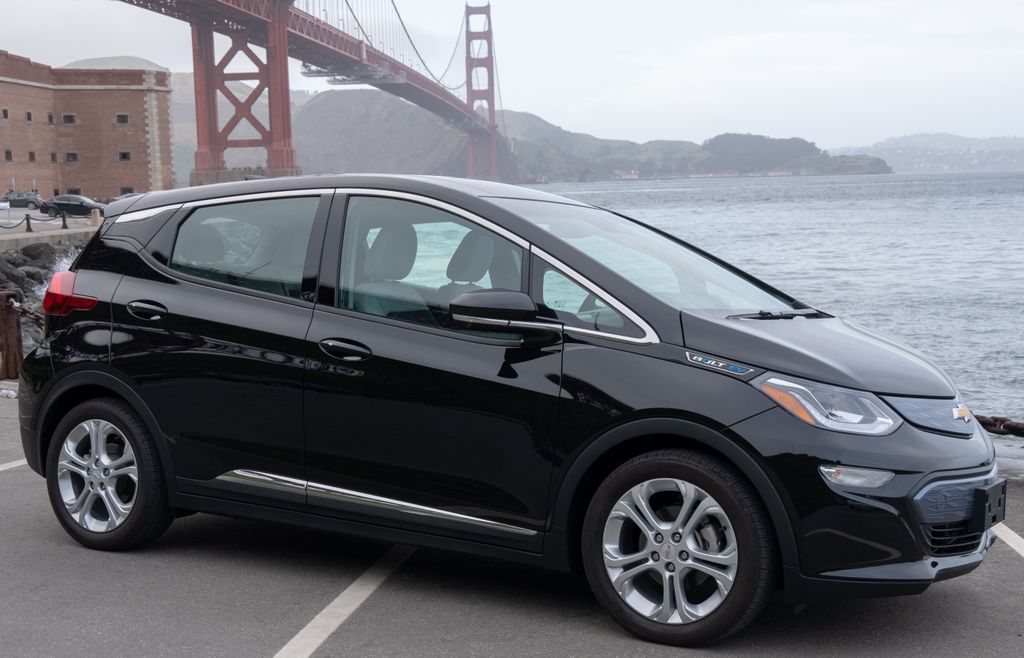
1. **Chevrolet Bolt**: While General Motors’ Chevrolet Bolt initially garnered praise for its affordability and a respectable electric range, its journey has been significantly plagued by serious, well-publicized problems. This compact EV, once a promising contender in the accessible electric market, quickly developed a reputation for issues that tragically overshadowed its initial appeal. The promise of an economical and green commute often gave way to unexpected and concerning realities for its owners.
The most infamous issue associated with the Bolt centers critically around its battery-related fires, a severe flaw that necessitated extensive and costly recalls in both 2020 and 2021. The root cause of these dangerous incidents was traced back to lithium-ion batteries manufactured by LG, which were found to be susceptible to short-circuiting, overheating, and ultimately igniting into flames. Such a fundamental safety concern fundamentally eroded owner confidence, transforming a daily driver into a constant source of anxiety.
Beyond these alarming battery problems, owners have also frequently cited a range of other less severe but still frustrating drawbacks that detract from the overall ownership experience. The vehicle’s ride quality is often described as merely “so-so,” failing to deliver a smooth or engaging experience on various road surfaces. Additionally, the space provided for rear passengers is considered inadequate for many, and the overall handling characteristics are perceived as unremarkable, further dampening the car’s overall satisfaction.
Car Model Information: 2023 Chevrolet Bolt EUV FWD LT
Name: Chevrolet Bolt EV
Caption: 2022 Chevrolet Bolt EV
Manufacturer: General Motors
Production: unbulleted list
ModelYears: unbulleted list
Class: Subcompact car
BodyStyle: hatchback
Layout: Front-engine, front-wheel-drive layout
Predecessor: Chevrolet Spark EV
Categories: 2020s cars, All Wikipedia articles in need of updating, All articles containing potentially dated statements, All articles with unsourced statements, Articles containing potentially dated statements from February 2018
Summary: The Chevrolet Bolt EV (marketed in Europe as Opel Ampera-e) is a battery electric subcompact hatchback manufactured and marketed by General Motors under its Chevrolet brand from late 2016 until late 2023, with a brief hiatus between mid-2021 and early 2022.
The first-generation Bolt was developed and manufactured with LG Corporation. Sales of the 2017 Bolt began in California in December 2016; it was released nationwide and international markets release in 2017. A rebadged European variant was marketed as the Opel Ampera-e in mainland Europe. In 2017, the Bolt was the second-best-selling plug-in car in the United States. It was named the 2017 Motor Trend Car of the Year, the 2017 North American Car of the Year, an Automobile magazine 2017 All Star, and was listed in Time magazine’s Best 25 Inventions of 2016. The Ampera-e was discontinued after 2018. By the end of 2020, GM had sold 112,000 Bolt and Ampera-e cars worldwide. The first-generation Bolt had been subject to at least three recalls due to battery fire risks.
In mid-2023, GM officials said they would discontinue the Bolt; after outcry, they announced plans for a next-generation model, which is expected to be revealed in 2025 for model year 2026.
Get more information about: Chevrolet Bolt
Buying a high-performing used car >>>
Brand: Chevrolet Model: Bolt
Price: $16,866 Mileage: 78,044 mi.
Read more about: Unleashing the Future: 10 Game-Changing Strategies for Lightning-Fast EV Road Trips
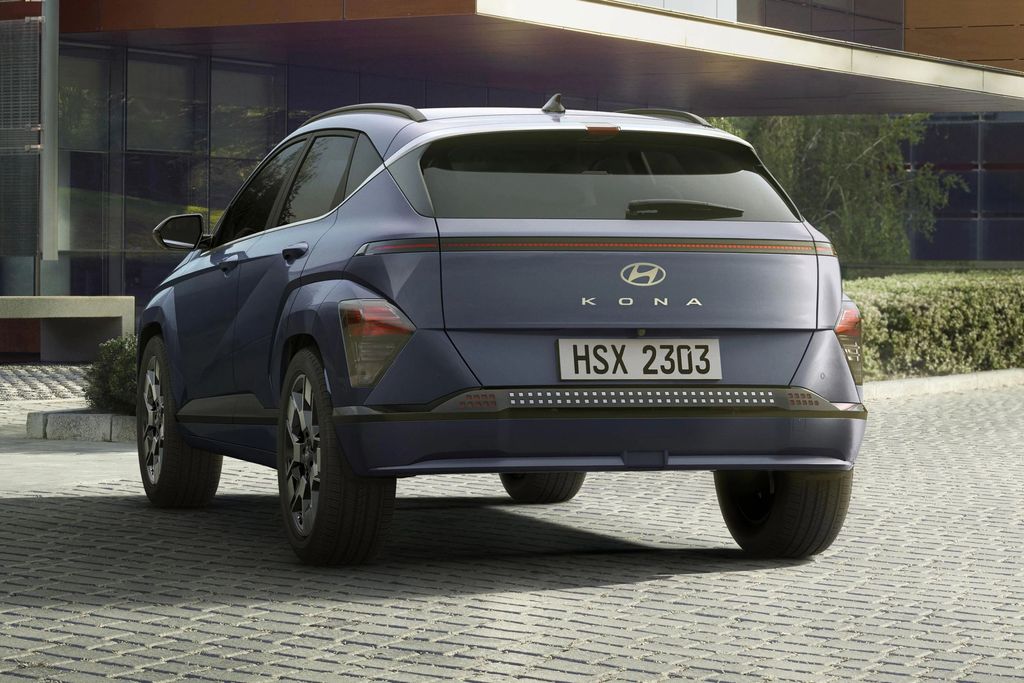
2. **Hyundai Kona Electric**: Hyundai has, in recent years, largely earned a commendable reputation for rolling out interesting and well-received electric vehicles, demonstrating significant advancements in the EV market. However, even successful manufacturers can have their missteps, and the Hyundai Kona Electric stands out as a notable “clunker” in their otherwise impressive electric lineup. Its history, unfortunately, mirrors some of the most concerning issues seen in other early mass-produced EVs.
Similar to other models of its era, the Hyundai Kona Electric has been tarnished by a history of battery fires and subsequent recalls. Hyundai proactively issued a worldwide recall in both 2020 and 2021, aiming to proactively address and eliminate these fire risks by replacing faulty battery packs in all affected electric vehicles. This widespread action, while absolutely necessary for public safety, highlighted a significant underlying design or manufacturing flaw that caused considerable alarm among owners and potential buyers.
However, for many owners, these battery issues represent just the tip of the iceberg, hinting at deeper, unresolved problems within the vehicle’s long-term reliability profile. While specific additional complaints beyond the battery are not detailed in the context, the stark warning “Buyer beware!” strongly suggests that other forms of dissatisfaction or mechanical concerns contribute to a pervasive sense of regret. The vehicle’s early promise of efficient, modern electric transport often succumbs to these underlying reliability anxieties, leaving buyers feeling wary of their purchase.
Car Model Information: 2023 Dodge Challenger SRT Hellcat
Name: Hyundai Kona
Caption: Hyundai Kona N Line (SX2)
Manufacturer: Hyundai Motor Company
Aka: Hyundai Kauai (Portugal)
Production: 2017–present
ModelYears: 2018–present
Class: Subcompact crossover SUV
BodyStyle: SUV
Layout: ubl
Categories: 2020s cars, All-wheel-drive vehicles, All Wikipedia articles in need of updating, Articles containing Chinese-language text, Articles containing Korean-language text
Summary: The Hyundai Kona (Korean: 현대 코나) is a subcompact crossover SUV produced by the South Korean manufacturer Hyundai. The first-generation Kona debuted in June 2017 and the production version was revealed later that year. It is positioned between the Venue or Bayon and the Tucson in Hyundai crossover SUV line-up. The battery electric version called the Kona Electric (or Kona EV) was first launched in South Korea during the first half of 2018 and rolled out gradually worldwide afterwards.
Get more information about: Hyundai Kona
Buying a high-performing used car >>>
Brand: Hyundai Model: Kona Electric
Price: $72,500 Mileage: 2,818 mi.
Read more about: Beyond the Hype: Dissecting EV Battery Longevity and Performance in the Real World
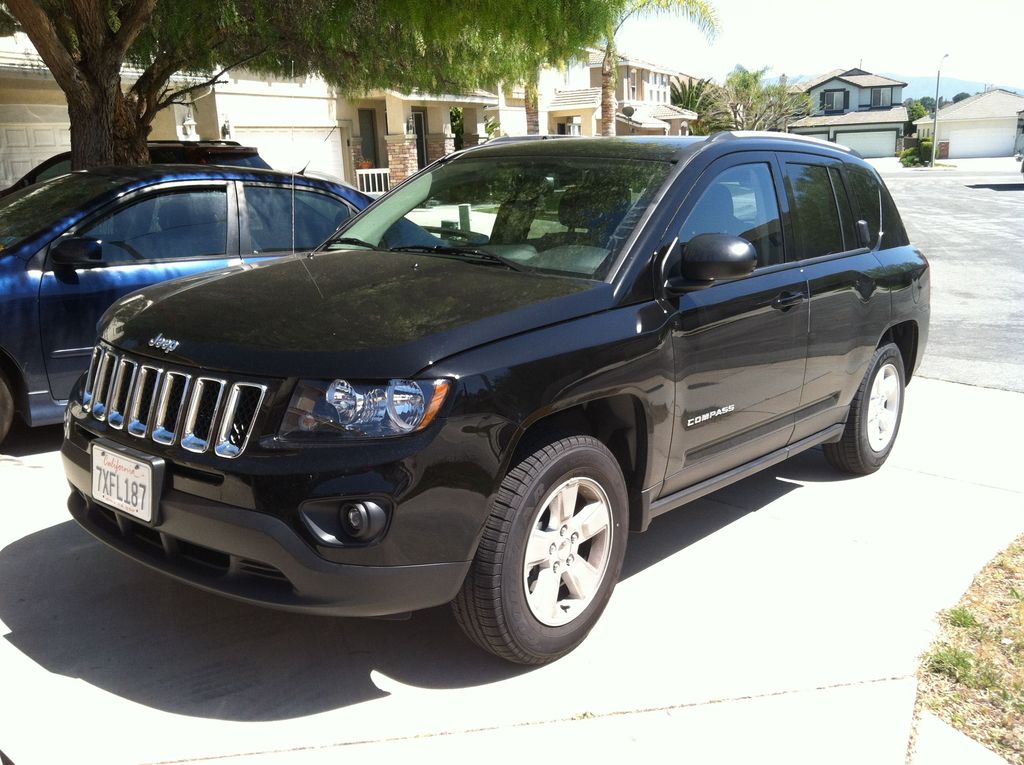
3. **Jeep Compass**: Marketed as a compact SUV designed for adventure and capability, the Jeep Compass has, across various model years, accumulated a troubling track record of serious mechanical issues. For many who bought into the brand’s rugged image, ownership has unfortunately translated into what can only be described as “a migraine headache on wheels,” a continuous source of frustration and unexpected repair bills that undermine its utility. This divergence from its advertised capability is a significant factor in buyer’s remorse.
One of the most common and severely criticized problems owners report involves the vehicle’s transmissions. Both the continuously variable transmission (CVT) and the 9-speed automatic transmissions are frequently cited for experiencing “herky-jerky shifting” and, in far too many cases, catastrophic failure, often well before anticipated. Such transmission woes not only compromise the driving experience but also pose significant safety concerns and lead to exceptionally expensive repairs, often rendering the vehicle unreliable for daily use.
In addition to these critical transmission flaws, the Jeep Compass is further plagued by a series of other pervasive reliability concerns that collectively contribute to owner dissatisfaction. Owners frequently complain about poor engine performance, which detracts from both efficiency and driving pleasure during commutes or longer trips. Excessive oil consumption has also been a recurring issue, indicating potential underlying engine problems, alongside various electrical system malfunctions that can disrupt everything from infotainment to essential vehicle functions.
Car Model Information: 2018 Jeep Compass Latitude
Name: Jeep Compass
Caption: 2019 Jeep Compass
Manufacturer: Jeep
Production: 2006–present
ModelYears: 2007–present
Class: Compact crossover SUV
BodyStyle: SUV
Layout: Front-engine, front-wheel-drive layout
Chassis: Unibody
Categories: 2010s cars, 2020s cars, All-wheel-drive vehicles, All Wikipedia articles written in American English, Articles with short description
Summary: The Jeep Compass is a compact crossover SUV, introduced in 2006 for the 2007 model year. The first generation Compass and Patriot, its rebadged variant, were among Jeep’s first crossover SUVs. The second-generation Compass debuted in September 2016 in Brazil and at the Los Angeles International Auto Show in November 2016, sharing a modified platform with the Renegade. It is positioned between the smaller Renegade and the larger Cherokee globally or the Commander in South America. The third-generation Compass debuted in May 2025, built on the STLA Medium by Stellantis, shared with other PSA Groupe vehicles.
Get more information about: Jeep Compass
Buying a high-performing used car >>>
Brand: Jeep Model: Compass
Price: $13,393 Mileage: 78,869 mi.
Read more about: The Billionaire’s Driveway: An Exclusive Look at The World’s Most Coveted Celebrity Car Collections
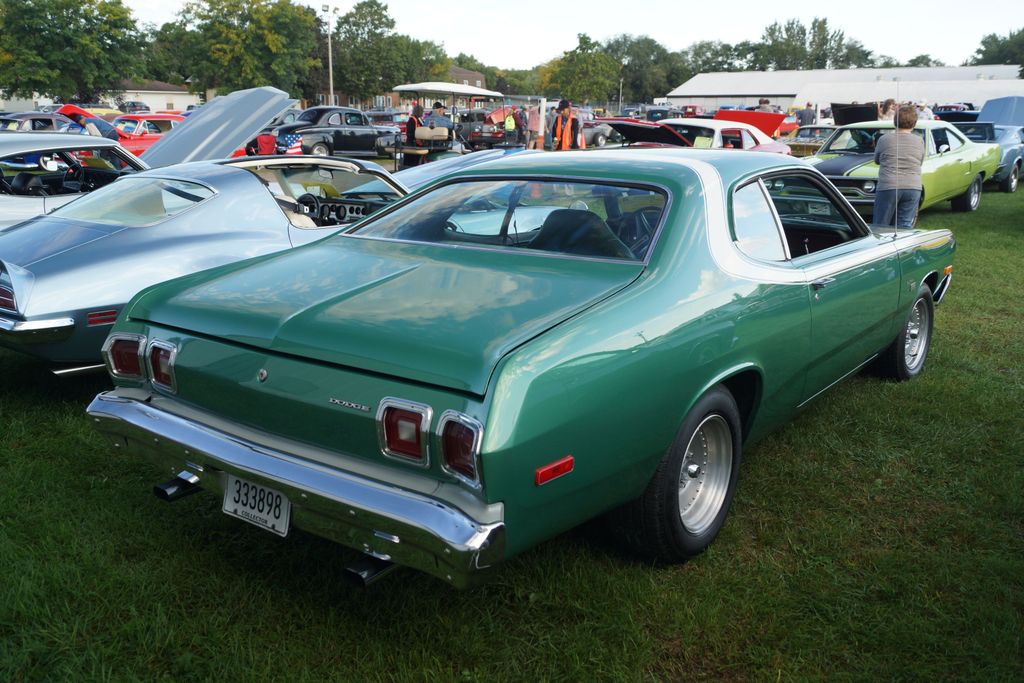
4. **Dodge Dart**: The Dodge Dart, a compact sedan, paradoxically gained a reputation for having “full-size car problems,” transforming what should have been an economical and straightforward ownership experience into a constant battle with mechanical and operational woes. This unexpected depth of issues across multiple critical components has made it one of the most consistently regretted purchases in its segment, profoundly disappointing a significant portion of its initial owners.
The range of problems reported by Dart owners is alarmingly broad and affects nearly every major system of the vehicle, making comprehensive reliability a distant dream. From the intricate workings of the transmission to the core performance of the engine, and extending to the responsiveness of the suspension and the critical reliability of the brakes, the Dart has been a source of continuous headaches for its drivers. This widespread unreliability means that drivers are rarely without a concern, no matter how minor or major the issue.
The sentiment of dissatisfaction among Dodge Dart buyers is starkly illustrated by objective consumer reports and surveys. According to Consumer Reports, an astonishing “around six in 10 buyers say they are not satisfied with the vehicle,” a remarkably high percentage for any popular model. This overwhelming indication of regret speaks volumes about the Dart’s fundamental failure to deliver on basic expectations of reliability and quality, leaving a substantial majority of owners wishing they had explored other options before making their purchase.
Car Model Information: 1972 Dodge Dart Swinger
Name: Dodge Dart
Caption: 1966 Dodge Dart GT 2-door hardtop
Manufacturer: Dodge
Production: 1959–1976 (US market)
1969-1981 (Brazil)
AlternativeName: Charger (Brazil)
ModelYears: 1960–1976 (US market)
1970-1981 (Brazil)
Class: Full-size
Layout: FR layout
Predecessor: Dodge Coronet#Fourth generation (1957–1959)
Related: Plymouth Valiant,Chrysler Valiant,Dodge Phoenix
Successor: Dodge Aspen,Dodge Diplomat,Talbot Tagora
Categories: 1970s cars, All articles with unsourced statements, Articles with short description, Articles with unsourced statements from December 2023, Articles with unsourced statements from May 2025
Summary: The Dodge Dart is a line of passenger cars produced by Dodge from the 1959 to 1976 model years in North America, with production extended to later years in various other markets.
The production Dodge Dart was introduced as a lower-priced full-size model in 1960 and 1961, but became a mid-size car for one model year for 1962, and was then reduced to a compact for two generations, from 1963 to 1976.
Chrysler had first used ‘Dart’ name plates on two Italian styled show cars, in 1956 and 1957, before it became a Dodge model name. The Dart nameplate was resurrected for a Fiat-derived compact car that was introduced in 2012.
Get more information about: Dodge Dart
Buying a high-performing used car >>>
Brand: Dodge Model: Dart
Price: $18,900 Mileage: 40,424 mi.
Read more about: Unearthing the Automotive Unicorns: 9 Muscle Cars So Rare Even Dedicated Collectors Scramble to Find Them

5. **Dodge Grand Caravan**: For countless families, the Dodge Grand Caravan holds a unique place, often serving as a versatile hauler for people, pets, and countless belongings, thereby accumulating a wealth of travel memories. While some of these memories may be fond, the reality of driving a Grand Caravan has often been “anything but smooth,” with the minivan proving to be a less-than-dependable companion for daily life and long journeys alike, leading to profound disappointment.
The primary source of frustration for many owners consistently revolves around the vehicle’s transmission, with transmission failure being a pervasive and common complaint that impacts its core functionality. Before succumbing entirely, these transmissions often exhibit a series of alarming symptoms, including “delayed gear engagement, rough shifting, and slipping.” Such issues not only make the driving experience unpleasant and unpredictable but also introduce significant safety concerns and necessitate expensive, inconvenient repairs, often leaving families stranded.
Beyond the critical transmission problems, owners also frequently report significant issues with the electrical system, leading to unexpected malfunctions and failures of various components within the cabin and beyond. Heavy oil consumption is another recurring complaint, indicating potential engine health issues and adding to the burden of routine maintenance. Faced with these persistent reliability concerns, many owners express a strong desire to “rewind time and have a do-over,” wishing they had chosen a more dependable family vehicle for their needs.
Car Model Information: 2023 Dodge Challenger SRT Hellcat
Caption: 2011 Dodge Grand Caravan Mainstreet
Name: Dodge Grand Caravan
Manufacturer: Chrysler Corporation,Daimler AG,Chrysler LLC,Chrysler Group LLC,FCA US LLC
Class: Minivan
Layout: FF layout,F4 layout
Production: November 2, 1983 –August 21, 2020
ModelYears: 1984–2020
Related: Plymouth Voyager,Chrysler Town & Country (minivan),Dodge Mini Ram,Chrysler Voyager,Volkswagen Routan
Assembly: Windsor, Ontario,Fenton, Missouri,Fenton, Missouri,Fuzhou
Successor: Dodge Journey,Chrysler Voyager
Categories: All-wheel-drive vehicles, All articles with unsourced statements, Articles with short description, Articles with unsourced statements from December 2017, Articles with unsourced statements from May 2009
Summary: The Dodge Caravan is a series of minivans manufactured by Chrysler from the 1984 through 2020 model years. The Dodge version of the Chrysler minivans, was marketed as both a passenger van and a cargo van (the only version of the model line offered in the latter configuration). For 1987, the model line was joined by the long-wheelbase Dodge Grand Caravan. Produced in five generations across 36 model years, the Dodge Caravan is the second longest-lived Dodge nameplate (exceeded only by the Dodge Charger). Initially marketed as the Dodge counterpart of the Plymouth Voyager, the Caravan was later slotted between the Voyager and the Chrysler Town & Country. Following the demise of Plymouth, the model line became the lowest-price Chrysler minivan, ultimately slotted below the Chrysler Pacifica.
Sold primarily in the United States and Canada, the Dodge Caravan was also marketed in Europe and other international markets under the Chrysler brand (as the Chrysler Voyager or Chrysler Caravan). From 2008 onward, Dodge marketed the model line only as the Grand Caravan; Ram Trucks sold a cargo-only version of the model line as the Ram C/V Tradesman. The model line was also rebranded as the Volkswagen Routan from 2009 through 2014.
After the 2020 model year, the Dodge Grand Caravan was discontinued, ending production on August 21, 2020. For 2021 production, the Grand Caravan nameplate was moved to Chrysler, which used it for a Canadian-market version of the Chrysler Pacifica (in the United States, the exact vehicle was marketed as the Chrysler Voyager).
For its entire production run, the Dodge Caravan/Grand Caravan was manufactured by Chrysler Canada (now Stellantis Canada) at its Windsor Assembly facility (Windsor, Ontario). From 1987 until 2007, the model line was also manufactured by Chrysler at its Saint Louis Assembly facility (Fenton, Missouri). Since their introduction in late 1983, over 14.6 million Chrysler minivans have been sold worldwide (including export versions and versions sold through rebranding).
Get more information about: Dodge Caravan
Buying a high-performing used car >>>
Brand: Dodge Model: Grand Caravan
Price: $72,500 Mileage: 2,818 mi.
Read more about: 14 Family-Friendly Vehicles That Actually Fit Three Car Seats Across: Your Ultimate Guide
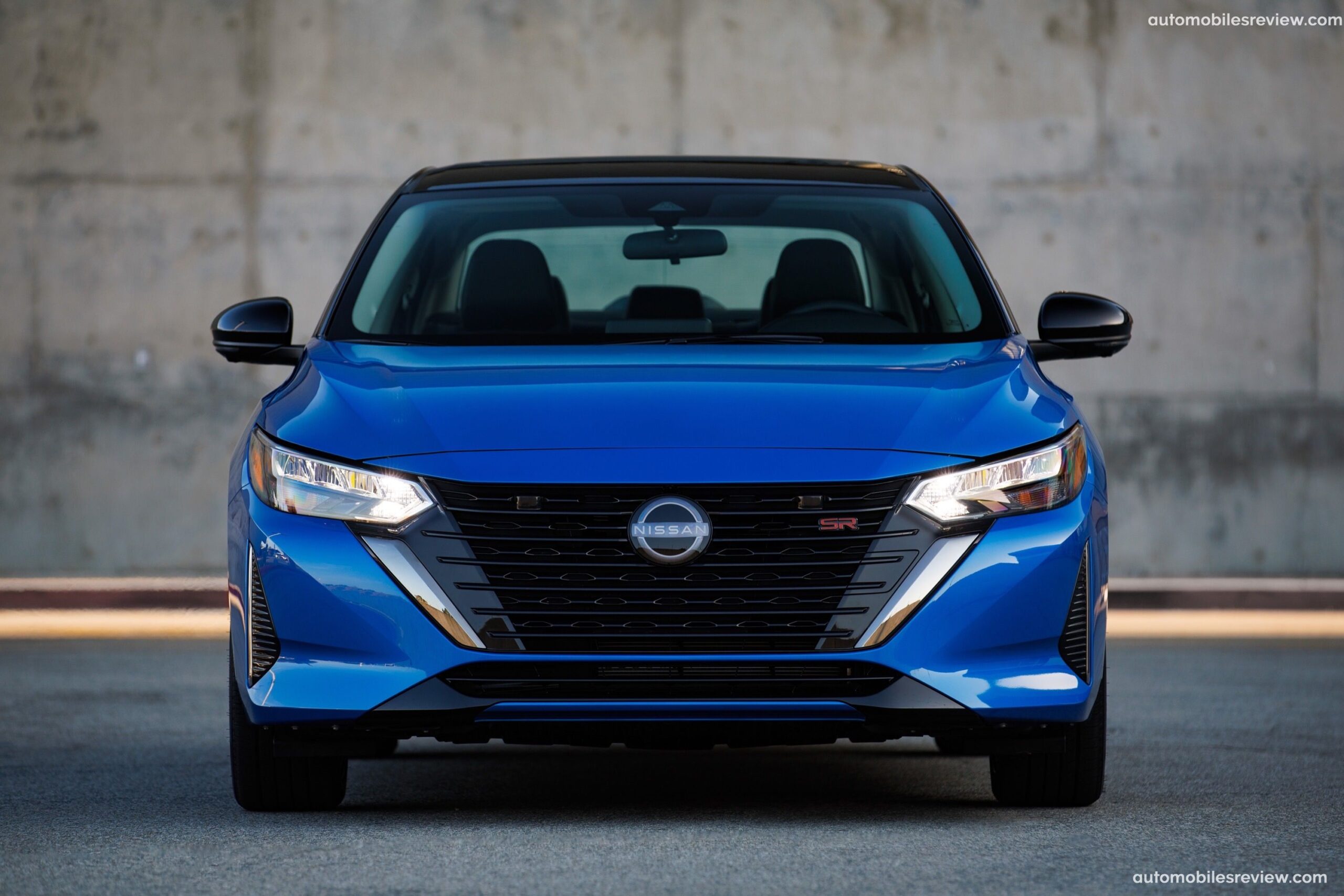
6. **Nissan Sentra**: The Nissan Sentra, like many long-running models in the competitive automotive market, has seen its share of both commendable and regrettable iterations throughout its production history. While certain model years might offer a satisfactory ownership experience, the period from 2013 to 2019 stands out as particularly “horrific” for many owners, solidifying its place on lists of vehicles buyers wish they had actively avoided. These specific model years were unfortunately marred by a critical, widespread flaw.
At the heart of the Sentra’s problems during this problematic era was the infamous continuously variable transmission (CVT), which proved to be a constant “thorn in the side” for countless owners. This transmission technology, intended to provide smooth and efficient power delivery, instead frequently suffered from overheating, jerky acceleration, and persistent shuddering, severely compromising the driving experience and leading to immense frustration and even safety concerns for drivers.
The litany of issues extended significantly beyond the transmission, also including worrying instances of engine stalling, which can be both inconvenient and potentially dangerous in traffic. Furthermore, these particular Sentra model years were subjected to numerous recalls related to critical safety components such as airbags, seatbelts, and brakes. This combination of mechanical failures and safety concerns has made the Nissan Sentra from 2013 to 2019 a prime example of profound buyer’s remorse for many consumers.
The initial thrill of a new vehicle purchase often masks underlying issues that can surface within months or even weeks, turning a dream into a financial and emotional burden. While the allure of attractive pricing or distinctive styling can be powerful, it’s crucial for consumers to look beyond the immediate appeal and delve into the long-term ownership experience. These vehicles, despite their initial promise, consistently fail to deliver on fundamental expectations of reliability and performance, leaving a trail of disappointed owners wishing they had chosen a different path.
Our journey through buyer’s remorse continues, exposing more popular cars that, despite their widespread presence on roads, have become notorious for mechanical shortcomings, design flaws, and a cumulative cost of ownership that far outweighs any initial perceived value. These are not isolated incidents but patterns of widespread dissatisfaction, meticulously documented through owner complaints and professional automotive analyses. For prospective buyers, understanding these pitfalls is not just a recommendation, it’s an absolute necessity to avoid making a costly mistake.
Car Model Information: 2024 Nissan Sentra S
Name: Nissan Sentra
Caption: 2021 Nissan Sentra SR (B18; Canada)
Manufacturer: Nissan
Aka: Nissan Sunny
Production: 1982–present
Class: Subcompact car
Predecessor: Nissan Sunny#B310
Categories: 1990s cars, 2000s cars, 2010s cars, 2020s cars, All Wikipedia articles written in American English
Summary: The Nissan Sentra is a series of automobiles manufactured by the Japanese automaker Nissan since 1982. Since 1999, the Sentra has been categorized as a compact car, while previously it occupied the subcompact class. Until 2006, Sentra was a rebadged export version of the Japanese Nissan Sunny, but since the 2013 model year, Sentra is a rebadged export version of the Sylphy. The Sentra nameplate is not used in Japan. Many other countries in Latin America sell their versions of the Sunny as the Sentra. In Mexico, the first three generations of the Sentra were known as the Nissan Tsuru (Japanese for crane), and the B13 model was sold under that name until 2017, alongside the updated models badged as Sentra.
In North America, the Sentra currently serves as Nissan’s compact car, despite being rated as a mid-size car by the EPA due to its interior volume since the 2007 model year. While previous Sentras were subcompacts, the Sentra has grown over the years, with the Nissan Versa having replaced the Sentra in the entry-level area.
The Sentra name was created for Nissan by Ira Bachrach of NameLab, and Bachrach describes the origin as “Nissan wanted consumers to understand that it was quite safe even though it was small. The word Sentra sounds like central as well as sentry, which evokes images of safety.”
Get more information about: Nissan Sentra
Buying a high-performing used car >>>
Brand: Nissan Model: Sentra
Price: $18,993 Mileage: 9,063 mi.
Read more about: The 14 Most Fuel-Efficient Cars of 2025: Expert Insights to Save You Thousands Annually

7. **Chrysler 200**The Chrysler 200, a sedan manufactured between 2011 and 2017, frequently features on lists of vehicles plagued by pervasive reliability issues. While some model years were more problematic than others, the 2015, 2016, and 2017 iterations, in particular, became synonymous with frustrating mechanical failures. Many owners initially drawn to its modern aesthetics and competitive pricing soon discovered that the vehicle’s true cost extended far beyond its sticker price, leading to profound disappointment and a sense of being trapped with a problematic machine.
A primary source of distress for Chrysler 200 owners centered critically around the 9-speed automatic transmission. This complex component was frequently cited for exhibiting erratic behavior, including harsh shifts, delayed engagement, and a concerning propensity for catastrophic failure. Such transmission woes not only compromised the driving experience, making it unpredictable and unpleasant, but also presented significant safety concerns. The financial burden of addressing these issues, often requiring expensive repairs or even complete replacement, quickly eroded any perceived value and transformed the vehicle into a constant source of financial drain.
Beyond these critical transmission problems, the Chrysler 200 also suffered from recurring engine performance issues. Owners reported a lack of responsiveness, subpar power delivery, and instances where the engine simply failed to meet expected efficiency standards. This combination of an unreliable powertrain and a disappointing engine further solidified the vehicle’s reputation for poor long-term dependability. For many, the cumulative effect of these mechanical shortcomings meant their investment turned into an ongoing series of costly repairs and a persistent sense of regret over their purchasing decision.
Car Model Information: 2015 Chrysler 200 S
Name: Chrysler 200
Manufacturer: Chrysler
Production: 2010–2016
ModelYears: 2011–2017
Assembly: Sterling Heights, Michigan
Class: Mid-size car
Sp: us
Predecessor: Chrysler Sebring
Categories: 2010s cars, All articles with dead external links, All articles with unsourced statements, Articles with dead external links from July 2020, Articles with permanently dead external links
Summary: The Chrysler 200 is a mid-size sedan that was manufactured and marketed by Chrysler from model years 2011 to 2017 across two generations in four-door sedan and two-door convertible (first generation only) body styles.
The 200 nameplate debuted on the 200C, a prototype hybrid vehicle shown at the 2009 North American International Auto Show in Detroit and based on the Chrysler 300. The 200C concept was engineered to accept either traditional gasoline, hybrid or full-electric powertrains.
Get more information about: Chrysler 200
Buying a high-performing used car >>>
Brand: Chrysler Model: 200
Price: $7,200 Mileage: 122,275 mi.
Read more about: Inside Donald Trump’s Lavish Car Collection: From Classic Rolls-Royces to Supercars
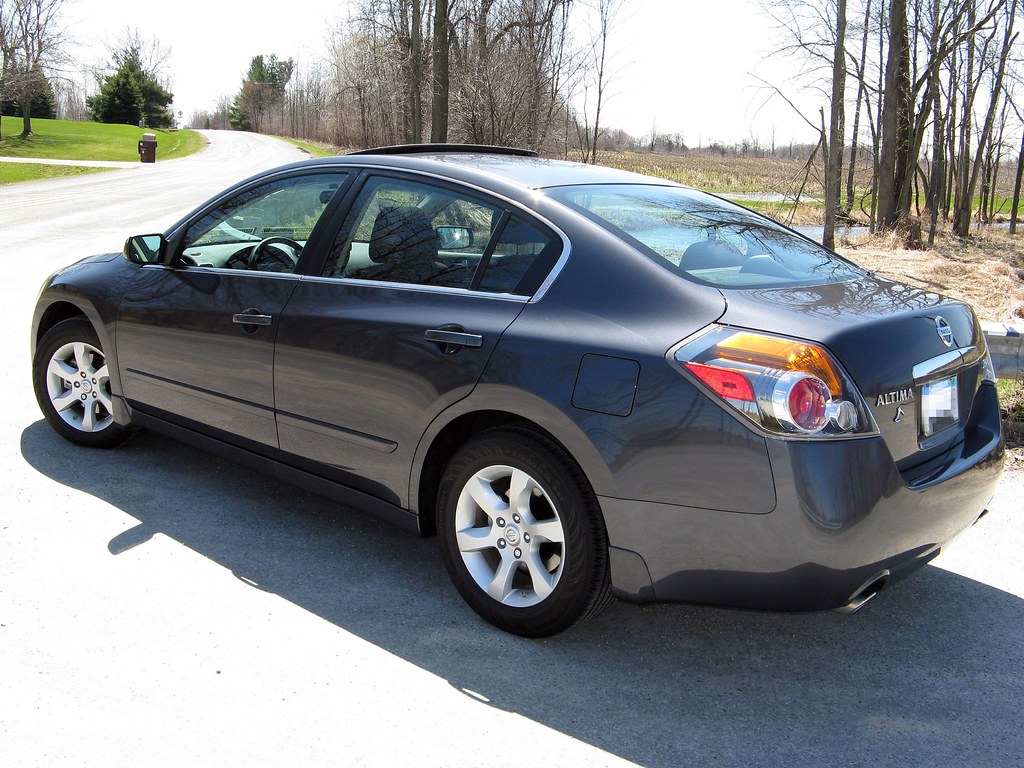
8. **Nissan Altima**Another prominent example of a vehicle that frequently lands owners in a deep state of buyer’s remorse is the Nissan Altima, particularly models produced from 2013 to 2019. Despite its popularity as a sensible, mid-size sedan, this era of the Altima became infamous for a range of critical problems that fundamentally undermined its reliability and the overall ownership experience. The initial appeal of its spacious interior and respectable fuel economy quickly faded when faced with recurring mechanical headaches that proved difficult and expensive to resolve.
At the core of the Altima’s widespread issues was its continuously variable transmission (CVT), which became a persistent “thorn in the side” for countless owners. This transmission technology, designed for smooth and efficient power delivery, instead frequently suffered from overheating, jerky acceleration, persistent shuddering, and, in too many instances, premature failure. These inherent flaws severely compromised the driving experience, making daily commutes frustrating and unreliable, and the extensive costs associated with repair or replacement often pushed owners past their breaking point, shattering their trust in the vehicle.
Adding to the Altima’s woes were a host of other pervasive reliability concerns that collectively contributed to owner dissatisfaction. Drivers frequently reported problems with the steering system, which could lead to a less precise and potentially unsafe driving experience. Excessive oil consumption was another recurring complaint, indicating deeper engine health issues and leading to increased maintenance costs, alongside troublesome oil leaks that created further messes and repair needs. This multitude of persistent problems meant that what began as a practical purchase often devolved into a constant cycle of worry, repair bills, and a profound desire to undo the initial buying decision.
Car Model Information: 2022 Nissan Altima SR FWD
Name: Nissan Altima
Caption: 2023 Nissan Altima SR (L34; US)
Manufacturer: Nissan
Aka: Nissan Bluebird
Production: 1992–present
Class: Compact car
Predecessor: Nissan Bluebird,Nissan Stanza
ModelYears: 1993–present
Categories: 2000s cars, 2010s cars, 2020s cars, All-wheel-drive vehicles, All Wikipedia articles written in American English
Summary: The Nissan Altima is a mid-size car manufactured by Nissan since 1992. It is a continuation of the Nissan Bluebird line, which began in 1955.
The Altima has historically been larger, more powerful, and more luxurious than the Nissan Sentra but less so than the Nissan Maxima. The first through fourth-generation cars were manufactured exclusively in the United States and officially sold in North and South America, along with the Middle East and Australia. For other markets, Nissan sold a related mid-size sedan called the Nissan Teana which was between the Altima and Maxima in terms of size. In 2013, the Teana became a rebadged version of the fifth-generation Altima.
The name “Altima” was originally applied to a top trim line of the Nissan Leopard for the Japanese market in 1986, and then to the Nissan Laurel Altima mid-size car sold in Central America and the Caribbean before 1992. In 1992, Nissan discontinued the Stanza which was a Nissan Bluebird clone, replacing it with the US-built Altima, while remaining a compact car. The first Altima was produced in June 1992, as a 1993 model. All Altima models for the North American market were built in Smyrna, Tennessee, until June 2004, when Nissan’s Canton, Mississippi plant also began producing the model to meet high demand.
Get more information about: Nissan Altima
Buying a high-performing used car >>>
Brand: Nissan Model: Altima
Price: $15,594 Mileage: 82,643 mi.
Read more about: The Unvarnished Truth: 9 Critical Reasons Why That Supercharged Muscle Car Might Not Be Your Dream Ride

9. **Nissan Versa Note**For budget-conscious buyers seeking an economical small hatchback, the Nissan Versa Note often presented an attractive proposition due to its notably low price point. However, as many owners quickly discovered, that low price unfortunately mirrored the vehicle’s quality level, rather than representing an exceptional value. The initial financial relief of an affordable purchase rapidly gave way to the frustrations of owning a car that struggled to meet even basic expectations for reliability and driving satisfaction. This experience serves as a stark reminder that sometimes, a deal that seems too good to be true often is.
The most significant and consistent source of discontent for Nissan Versa Note owners revolved around its continuously variable transmission (CVT). This particular iteration of the CVT proved to be a constant headache, frustrating owners “to no end” with its sluggish response, unpredictable behavior, and a tendency for premature failure. Far from delivering the smooth, efficient operation it promised, the transmission instead created a driving experience marred by a lack of confidence and the looming threat of costly repairs, making even short trips a source of irritation.
Compounding these transmission woes was the Versa Note’s anemic acceleration, stemming from its 1.6-liter 4-cylinder engine. This critical performance shortfall meant the vehicle struggled to keep up with traffic, particularly on highways or during merging maneuvers, diminishing both driver confidence and safety. The combination of an unreliable transmission and a fundamentally underpowered engine created an ownership experience that was not only economically draining due to potential repairs but also consistently unrewarding and often stressful for drivers who simply expected competent daily transportation.
Car Model Information: 2023 Dodge Challenger SRT Hellcat
Categories: All set index articles, Articles with short description, CS1 Mexican Spanish-language sources (es-mx), CS1 Portuguese-language sources (pt), CS1 Spanish-language sources (es)
Summary: Nissan Versa is an automobile nameplate used by the Japanese manufacturer Nissan in the Americas for the following models:
According to a Nissan press release in 2008, “versa” is short for “versatile space” meant to imply the spaciousness of the interior and configurable cargo arrangements. The Versa is one of the few remaining subcompact cars left on sale in the North American market, with most automakers dropping small cars from their lineups to focus on crossovers and SUVs.
Get more information about: Nissan Versa
Buying a high-performing used car >>>
Brand: Nissan Model: Versa Note
Price: $72,500 Mileage: 2,818 mi.
Read more about: Unveiling the Vault: America’s Most Extraordinary and Insane Car Collections Brought to Light
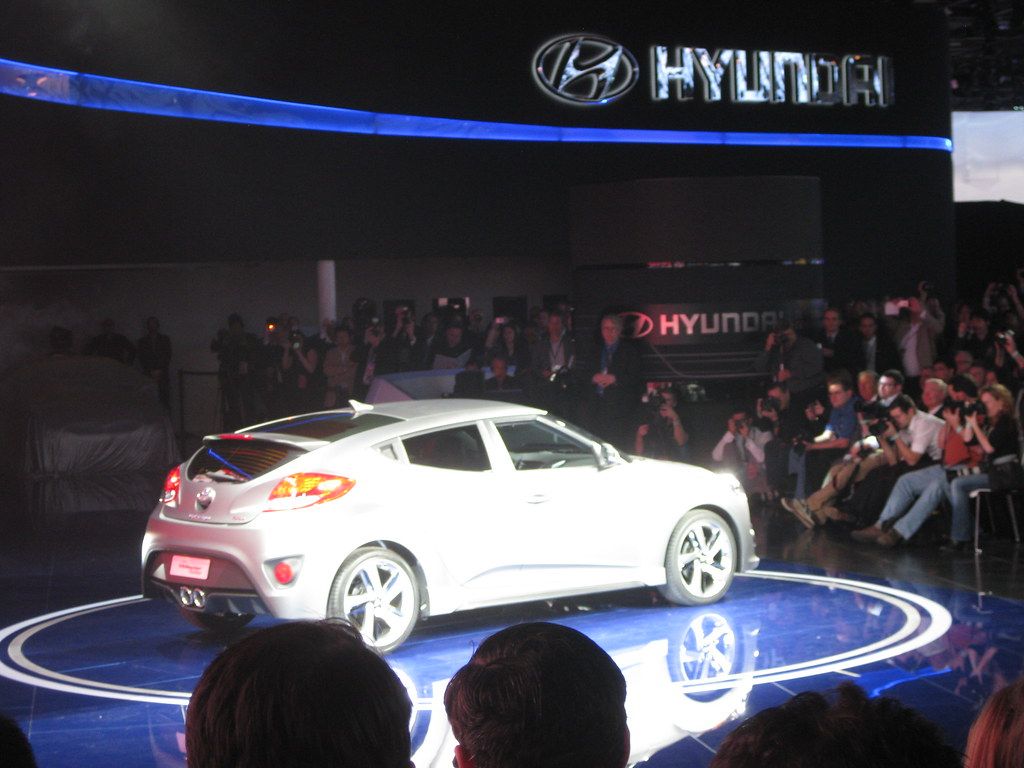
10. **Hyundai Veloster**The Hyundai Veloster, with its distinctive three-door configuration, responsive handling, and undeniably “cool-looking” styling, certainly captured attention and offered a refreshing alternative in the compact car segment. Many buyers were drawn to its sporty aesthetics and engaging driving dynamics, envisioning a fun and reliable daily driver. However, beneath this appealing surface, the Veloster concealed a range of significant mechanical problems that proved exceptionally difficult for owners to ignore, ultimately tarnishing its unique appeal and leading to considerable regret.
A major concern for Veloster owners centered on severe engine issues, with reports of problems so critical that they could lead to catastrophic failure. Such a fundamental flaw in the powertrain represents not only a significant financial burden for costly repairs or replacements but also a serious safety risk, potentially leaving drivers stranded or in dangerous situations. This alarming reliability shortfall fundamentally undermined the vehicle’s long-term viability and transformed the initial excitement into profound anxiety about its dependability.
Furthermore, the Veloster’s dual-clutch transmission also contributed significantly to owner dissatisfaction, exhibiting issues such as delayed acceleration, slipping, and jerky shifts. These transmission problems degraded the driving experience, making it less smooth and less predictable than advertised. Adding to this litany of woes, owners frequently reported problems with the suspension and steering systems, which further compromised ride comfort, handling precision, and overall reliability. Collectively, these diverse mechanical failures turned a car lauded for its unique design and spirited performance into a frustrating and expensive liability.
Car Model Information: 2019 Hyundai Veloster 2.0
Name: Hyundai Veloster
Manufacturer: Hyundai Motor Company
Production: 2011–2022
Class: Sport compact car
Layout: Front-engine, front-wheel-drive layout
BodyStyle: hatchback
Predecessor: Hyundai Tiburon
ModelYears: 2012–2022
Assembly: Ulsan
Categories: All Wikipedia articles in need of updating, All articles with unsourced statements, Articles containing Korean-language text, Articles with short description, Articles with unsourced statements from May 2018
Summary: The Hyundai Veloster (Korean: 현대 벨로스터, romanized: Hyeondae Belloseuteo) is a compact car first produced in 2011 by Hyundai, with sales beginning in South Korea on March 10, 2011, and in Canada and the United States since the fall of 2011. In South Korea, it was marketed under Hyundai’s ‘Premium Youth Lab’. It was unveiled on January 10, 2011, at the Detroit Auto Show, and fills the void left when Hyundai discontinued the Hyundai Tiburon after the 2008 model year.
The car differs from most other hatchbacks with its asymmetrical door configuration, featuring one large door on the driver side and two smaller doors on the passenger side. This configuration is more common on commercial vehicles and minivans.
Get more information about: Hyundai Veloster
Buying a high-performing used car >>>
Brand: Hyundai Model: Veloster
Price: $10,250 Mileage: 103,575 mi.
Read more about: 18 Cars Experts Say To Avoid: High Repair Costs Revealed

11. **Kia Rio**The Kia Rio often positioned itself as an appealing option for buyers prioritizing affordability and fuel efficiency in a compact car. Its low entry price and promise of economical operation drew in many consumers seeking practical transportation. However, what many owners discovered was that the Rio, while indeed affordable to purchase, frequently failed to deliver on the crucial aspect of long-term reliability, instead becoming equally well-known for persistent engine issues that overshadowed its initial cost-effectiveness.
Owners of the Kia Rio commonly reported engine problems such as rough idling and misfires, often traced back to issues with components like spark plugs or ignition coils. These persistent engine ailments resulted in an unreliable and unpleasant driving experience, characterized by inconsistent power delivery and unexpected surges or lulls. Such mechanical failures not only necessitated frequent and often inconvenient trips to service centers but also led to unexpected repair bills, effectively negating the financial benefits that initially made the Rio an attractive choice.
Beyond the critical engine concerns, owner dissatisfaction was further fueled by complaints regarding the vehicle’s cheap interior quality and various comfort issues. The materials used inside the cabin often felt flimsy and showed premature wear, detracting from the overall ownership experience and the perception of value. When combined with the underlying mechanical problems, these comfort and quality shortfalls made the Kia Rio a source of constant frustration, leaving many owners with a distinct feeling of buyer’s remorse and a strong desire to have chosen a more dependable, if perhaps slightly more expensive, alternative.
Learning from the collective experiences of other vehicle owners is a powerful way to make smarter, more informed buying decisions. The 11 cars we’ve discussed throughout this article, from their initial appeal to their long-term frustrations, serve as cautionary tales in the automotive landscape. These vehicles, despite their popularity or initial hype, consistently demonstrate that a significant financial investment can quickly turn into a relentless nightmare of repairs, unexpected costs, and profound disappointment.
Car Model Information: 2015 Kia Rio EX
Name: Kia Rio
Caption: Fourth generation Kia Rio
Manufacturer: Kia
Aka: Kia Pride (2005–2017),Kia K2 (China; 2011–2020)
Production: November 1999 – December 2023
ModelYears: 2001–2023 (North America)
BodyStyle: hatchback
Class: Subcompact car
Layout: Front-engine, front-wheel-drive layout
Predecessor: Kia Pride,Kia Avella
Successor: Kia K3 (BL7)
Categories: 2000s cars, 2010s cars, Articles containing Korean-language text, Articles with short description, CS1 Croatian-language sources (hr)
Summary: The Kia Rio (Korean: 기아 리오) is a subcompact car manufactured by Kia from 1999 to 2023. Body styles have included a three and five-door hatchback and four-door sedan, equipped with inline-four gasoline and diesel engines, and front-wheel drive.
The Rio replaced the first generation Pride—a rebadged version of the Ford Festiva—and the Avella, a subcompact sold as a Ford in some markets. A second generation was introduced in 2005 in Europe and in 2006 in North America, sharing its platform with the Hyundai Accent, a subcompact manufactured by its sister Hyundai Motor Company in South Korea.
In August 2023, the K3 was introduced as its successor in several markets such as Mexico and the GCC countries.
Get more information about: Kia Rio
Buying a high-performing used car >>>
Brand: Kia Model: Rio
Price: $9,700 Mileage: 114,450 mi.
Read more about: A Warming World’s Hidden Burden: Unpacking How Climate Change Accelerates Aging and Heightens Health Risks for Older Adults
Before you commit to a purchase, it’s absolutely crucial to look beyond glossy advertisements and appealing price tags. Dive deep into reliability reports, scrutinize owner reviews, and be acutely aware of recurring mechanical and design flaws. The automotive market is vast, and while some cars deliver unending satisfaction, others are destined to leave their owners wishing they could simply rewind time and choose differently. Don’t roll the dice on your next vehicle; empower yourself with knowledge and choose a car that promises, and actually delivers, a truly trouble-free journey.



